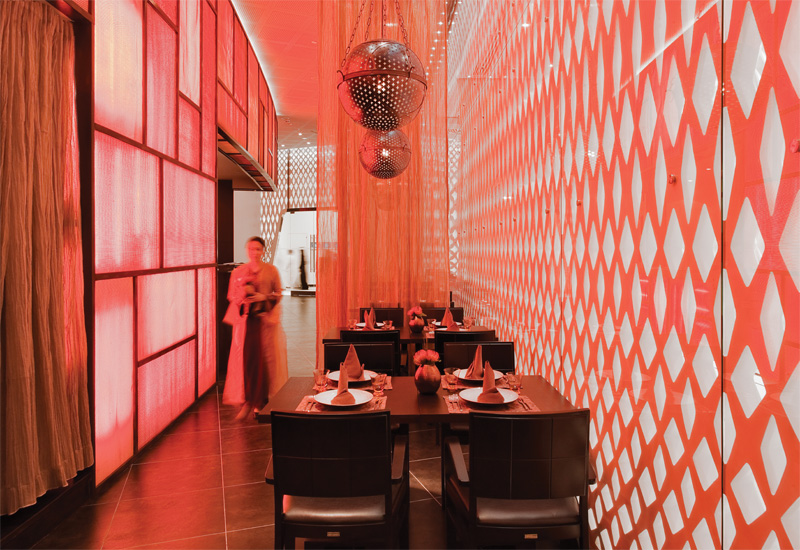Some of the region’s top Arabic chefs explain to Lucy Taylor how local cuisine is starting to win over international palates, one forkful at a time
The issue of defining ‘Arabic cuisine’ is a tough one.
No matter how similar many of the dishes served in the Middle East and North Africa are on paper, the region is thick with cultural idiosyncrasies, where families hand down their takes on recipes and chefs are influenced by local availability and tradition. It’s a melting pot of flavours, sums up Wafaei Al Zaham – chef de cuisine of Atayeb at Abu Dhabi’s Yas Viceroy Hotel.

| Advertisement |
“Arabic cuisine, as we know it today, is the result of a combination of richly diverse cuisines, incorporating Levantine, Yemeni, Indian and Persian cuisine – with many stalwart ingredients not in fact indigenous to the Persian Gulf region,” he explains.
Ali Hussain, executive Oriental chef at Al Nafoorah, located in Jumeirah Emirates Towers, adds: “Arabic cuisine incorporates different regional flavours from the Arab world, from Lebanon to Morocco. The style is rich in special flavour, with a variety of cold and hot dishes.”
Meanwhile Souraya Halloway, marketing and PR supervisor with Dubai-based franchise operator Cravia Inc, defines the style as “a combination of Mediterranean and Middle Eastern foods.”
Whilst the GCC boasts numerous independent shawarma joints offering a quick, tasty meal, Cravia’s Zaatar w Zeit brand – which slates itself as an “urban-casual Lebanese wrap concept,” is one of the very few authentically Middle Eastern fast food joints that has been embraced by local society.
Indeed, the company has enjoyed such success during its decade operating in the UAE, that it’s just announced plans to take the brand Saudi-side, starting with Riyadh.
Following that launch, Cravia is set to embark on an aggressive expansion plan – with 57 additional outlets slated for the GCC over the next few years.
Subtle Contrasts
Despite the similarity of dishes and flavours across the MENA region, Sofitel Bahrain Zallaq Thalassa Sea and Spa’s director of F&B, Charbel Hanna, points out that ingredients and subtle flavours vary, based on the climate and the location.
Hussain agrees: “This provides a wonderful opportunity for chefs to cook the same dish in different, delicious ways.”
Arabic chef for Rosewood’s Al Faisaliah Hotel and Hotel Al Khozama in Saudi Arabia, Kamal Korooni, expands: “North African food is often couscous-based or involves bread; while Gulf countries tend to use more rice and meat in their dishes.”
Cravia’s Halloway explains that there is also a strong Indian influence in the GCC.
“On the other hand,” she continues, “countries within the Levant region such as Lebanon and Syria are more influenced by the landscape.
“More Mediterranean weather permits them to work elements such as olive oil and fresh vegetables into their cuisine.”
Despite the wide variety of flavours on offer in the GCC and wider MENA region, Al Nafoorah’s
Hussain insists Arabic cuisine is well represented – and does not feel that any particular Middle Eastern style is left out.
“Visitors and residents alike are provided ample opportunity to taste and appreciate a variety of dishes from different countries, with a wide range of restaurants catering to the entire market,” he asserts.
There may be a marked synergy between national cuisines across the MENA region, but are restaurants showcasing certain styles more often than others?
Lebanese outlets appear to be the most common, as Cravia’s Halloway notes: “This national style is very popular in the region, due to the variety of dishes,” she explains.
“Their cuisine really covers both styles of Middle Eastern food: the spiced rice-and-meat dishes, as well as the fresh produce.”
But, with the MENA region often lumped together by those unfamiliar with its subtle nuances, this appreciation of one style can come at the expense of another.
“I think North African cuisine is undervalued here, mainly because it’s under-represented,” says Sofitel Bahrain’s Hanna.
Meanwhile it is difficult – nigh on impossible – to get anyone to identify precisely what constitutes authentically Emirati cuisine; although the general chef consensus seems to be heavy, greasy, slow-cooked meat-and-rice dishes, along with some seafood.
Article continues on next page ...









 Search our database of more than 2,700 industry companies
Search our database of more than 2,700 industry companies









